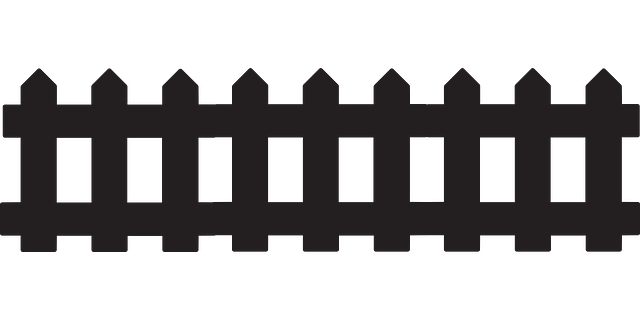New Bedford residents often rely on fences to enhance property security, aesthetics, and privacy. Whether aiming to replace an old fence or install a new one, understanding the local climate, terrain, and regulatory landscape is crucial. This article guides you through the process of New Bedford fence repair and installation, from identifying suitable fence types for your needs to navigating local permits. We’ll also provide step-by-step installation instructions, common repair tips, and insights into local regulations, ensuring a smooth and compliant project.
- Understanding New Bedford Fence Needs
- Choosing the Right Fence Type
- Installation Process Step-by-Step
- Common Repairs and Maintenance Tips
- Local Regulations and Permits for Fencing
Understanding New Bedford Fence Needs
Fences are integral to any property, serving both functional and aesthetic purposes. In New Bedford, understanding the unique needs of your fence is crucial for effective repair or installation. The climate plays a significant role; extreme weather conditions can take a toll on wooden fences, necessitating regular maintenance and replacement of weathered boards. Additionally, local regulations regarding fence heights and materials should be considered to ensure compliance and maintain the neighborhood’s aesthetic harmony.
The variety of fence styles in New Bedford, ranging from traditional picket fences to modern vinyl options, means that tailored solutions are available for every taste and budget. Identifying issues early on, such as loose posts or broken rails, allows for prompt repair, extending the lifespan of your fence. Professional assessment is invaluable in determining the best course of action, whether it’s a simple fix or a complete installation.
Choosing the Right Fence Type
When considering fence repair or installation, one of the most important decisions is choosing the right type for your needs and preferences. Different fences offer various levels of security, privacy, and aesthetic appeal, each with its unique advantages and maintenance requirements. For example, wood fences are popular due to their natural beauty and ability to blend seamlessly into any landscape, but they demand regular painting or staining to prevent rot and insect damage. On the other hand, vinyl fences are low-maintenance and durable, resistant to fading and warping, making them an excellent choice for those seeking a long-lasting solution with minimal upkeep.
Additionally, fencing materials can impact cost, lifespan, and energy efficiency. Metal fences, such as steel or aluminum, are robust and secure but may be more expensive and require specific installations. They’re ideal for areas needing high security or protection against intruders. Conversely, chain link fences offer a cost-effective option with quick installation, suitable for properties requiring a functional boundary without extensive aesthetic considerations. Understanding your priorities will guide you in selecting the perfect fence type to enhance your outdoor space.
Installation Process Step-by-Step
The installation process for new Bedford fences begins with measuring and marking the perimeter of the desired fence line, ensuring it aligns with local regulations. Next, dig post holes at calculated intervals, typically every 8 to 10 feet, using a post-hole digger or mechanical excavator. Once holes are prepared, set up wooden posts, ensuring they’re plumb and level before filling the holes with concrete for reinforcement.
After the concrete sets, attach horizontal rails to the posts, securing them with brackets. Then, install panels by connecting them to the rails using nails or screws. Throughout this process, double-check measurements and alignment to maintain precision. Finally, finish off by applying a protective coat of paint or sealant to safeguard against elements and enhance aesthetics.
Common Repairs and Maintenance Tips
Fences, much like any other structure, require regular care and maintenance to keep them in top condition. In New Bedford, common fence repairs often involve dealing with issues such as broken or missing boards, rusted posts, and gaps that allow for animal intrusion or unwanted visitors. Regular inspections are key to identifying these problems early on, preventing further damage, and ensuring the security of your property.
Maintenance tips include keeping an eye out for any signs of wear and tear, cleaning the fence regularly to prevent debris buildup, and applying fresh coats of paint or sealant as needed. For wooden fences, treating them with preservatives can help ward off rot and insect infestation. Additionally, trimming nearby trees and shrubs ensures clear visibility and prevents overgrowth that could damage the fence structure.
Local Regulations and Permits for Fencing
In New Bedford, fence installation and repair projects are subject to local regulations and permitting requirements aimed at maintaining community standards and ensuring safety. Before beginning any work, homeowners and contractors must familiarize themselves with these rules. The city’s building department oversees fencing permits, evaluating applications based on factors like material types, fence height, and location. Compliance with zoning ordinances is also crucial, as certain areas may have restrictions on fence placement and design.
Permits are typically required for fences that enclose outdoor spaces, create boundaries between properties, or stand higher than a specified height. The regulations are designed to preserve the aesthetic appeal of neighborhoods and ensure structural safety. Applicants should provide detailed plans outlining the proposed fence’s dimensions, materials, and any unique features. By adhering to these guidelines, residents can secure necessary permits for their fencing projects while contributing to a harmoniously regulated community environment.
